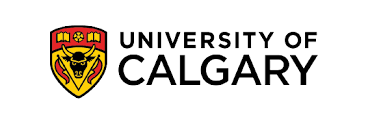University of Calgary: Alberta’s deep coal seams could be ideal place to permanently store carbon dioxide, new project shows
Carbon capture and storage (CCS) technology involves capturing carbon dioxide at industrial facilities and injecting the CO2 deep underground for permanent, safe storage (called “sequestration”) — keeping the greenhouse gas out of the atmosphere.
Planned CCS projects in Alberta include six carbon storage hubs, a large-scale CCS facility, and a carbon transportation line connecting more than 20 oilsands facilities to a carbon storage hub near Cold Lake, Alta.
A new pilot project led by Calgary-based clean energy company Cv̄ictus, and involving a University of Calgary research team led by Dr. Chris Clarkson, PhD, shows that deep, unmineable coal seams in Alberta could provide the ideal medium for permanently storing CO2.
“This successful pilot provides a proof-of-concept of, and critical data for, the secure storage of CO2 in deep coal seams, and in particular the Mannville coals in Alberta,” says Clarkson, professor in the Department of Geoscience in the Faculty of Science.
The field pilot, done near Red Deer, involved drilling a CO2 injection well 1,500 metres deep into the Mannville coal seams, along with an observation well. This enabled the project team to both inject CO2 and monitor subsurface movement of fluids, including CO2.
Monitoring and surveillance conducted during and after CO2 injection are critical for understanding the permanence of CO2 storage, Clarkson notes.
Over several days in February/March 2022, more than 1,500 tonnes of CO2 were injected into the deep coals, with a maximum injection rate of 17 tonnes per hour of CO2 achieved in the later stages of pilot operations.
Clarkson and his team of geoscientists and engineers were involved in the pilot design, including pre- and post-CO2 injection well testing and CO2 injection operations, along with coal sample analysis in the laboratory.
An additional UCalgary team, led by Dr. Kris Innanen, PhD, associate professor in the Department of Geoscience, was responsible for implementing geophysical techniques to detect CO2 in the subsurface.
Cv̄ictus will use the information from the pilot project to demonstrate the viability of its patented process for combined CO2 storage and enhanced hydrogen recovery.
Storing CO2 in coal may offer advantages over other methods
Previous studies have identified depleted oil and gas reservoirs or deep saline aquifers in Alberta as potential places for permanently storing CO2.
However, an ongoing concern with these approaches is ensuring the CO2 is contained and doesn’t migrate out of the CO2 injection target zone. This largely depends on the quality of the overlying caprock acting as a seal.
Depleted oil and gas reservoirs typically have multiple zones drilled in them, so potentially there could be a cross-flow of CO2 from the injection target zone to another zone.
As for storing CO2 in deep saline aquifers — as the Shell Quest CCS facility near Edmonton does — this method is technically challenging and very expensive.
There may be technical and economic advantages of CO2 sequestration in deep coal seams versus these other methods.
The coal naturally adsorbs CO2 in a near liquid-like state onto its internal surface, Clarkson says. Due to this strong adsorption, the CO2 is not easily released from coal without a large decrease in the geological formation’s pore pressure.
“Therefore, adsorption serves as a mechanism for secure, long-term storage of CO2,” Clarkson says.
Also, in countries such as China, which is a large GHG emitter and has sizeable coal deposits, coal seams potentially could be used to permanently store CO2.
Project expands knowledge of CO2 injection in deep coals
During the project, the Cv̄ictus team first injected water into the deep coal seam, to allow Clarkson’s team to study the impact of stress on the seam’s permeability (the quality that allows liquids or gases to pass through a substance).
“Those pre-CO2 injection tests were very important to isolate certain physical phenomena that we couldn’t have done just looking at the CO2 injection alone,” Clarkson says.
Clarkson’s and Innanen’s teams are currently analyzing the project data to assess the controls on CO2 injection, transport (between injection and observation wells) and storage.
“This pilot really expands our knowledge of what’s going to happen in deep coals if we inject CO2,” Clarkson says.
Cv̄ictus has been awarded $10 million by the Clean Resource Innovation Network for an initial commercial facility to produce hydrogen at the company’s site near Red Deer.
The company’s Mannville Enhanced Hydrogen Recovery Project is designed to produce seven tonnes per day of clean hydrogen at commercial operation in March 2024.
The project will be a first of its kind to extract hydrogen-rich syngas from deep coal and brine and re-inject associated CO2 back into the same deep seam for permanent geological storage.
Cv̄ictus plans to produce clean hydrogen, methanol, and ammonia from the syngas with lower emissions than current green technologies at a lower cost. The company will use the methanol it produces to grow a non-photosynthetic single-cell protein for animal feed,
Clarkson has been named as a collaborator for this project, and he and his team will continue to support Cv̄ictus through experimental and simulation work.
“Dr. Clarkson and the team from University of Calgary have been instrumental to this successful field demonstration of CO2 sequestration in coal,” says Michael Blinderman, chief technology officer and head of the CO2 injection program for Cv̄ictus.
University of Calgary brings deep expertise and independent academic validation of what we think will become a way to turn coal from a source to a sink of CO2.
Clarkson recently started a global network (including members from the U.S., Australia, China, and Europe), called “SEUCBM,” to evaluate the global potential for simultaneous CO2 sequestration and hydrogen production from coal.

